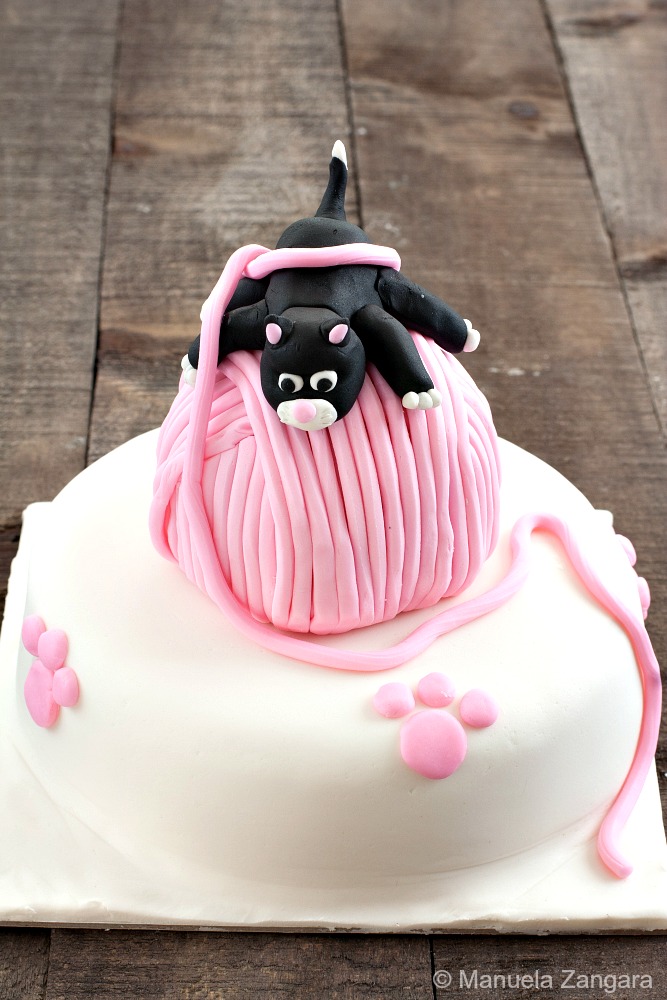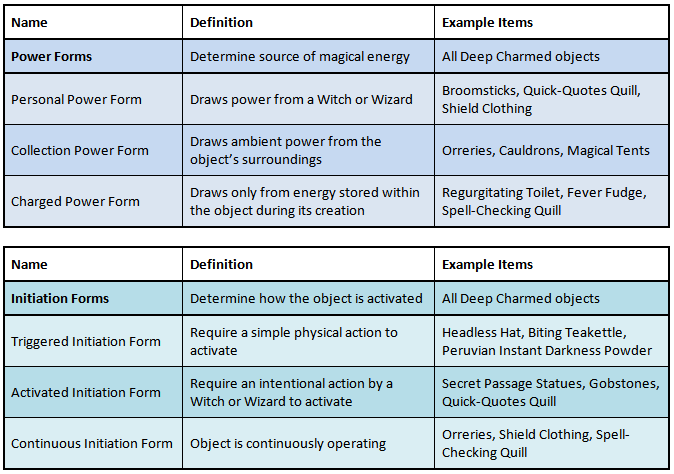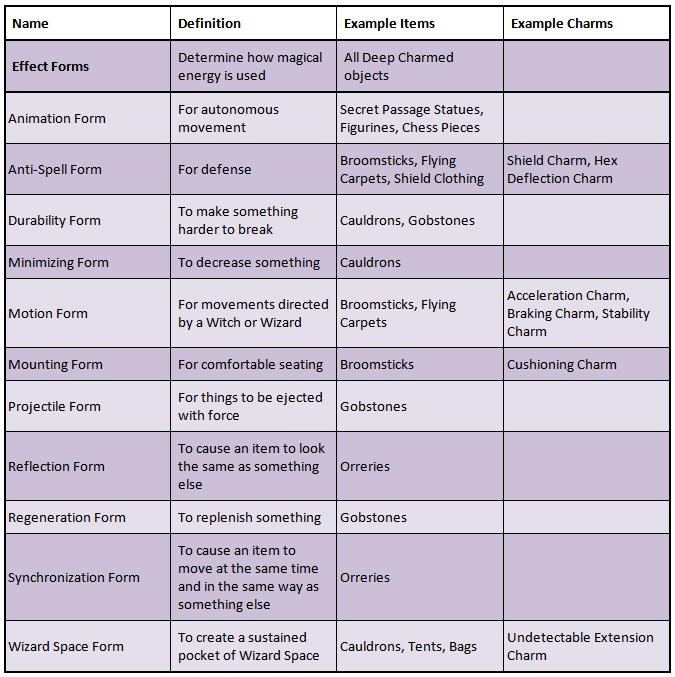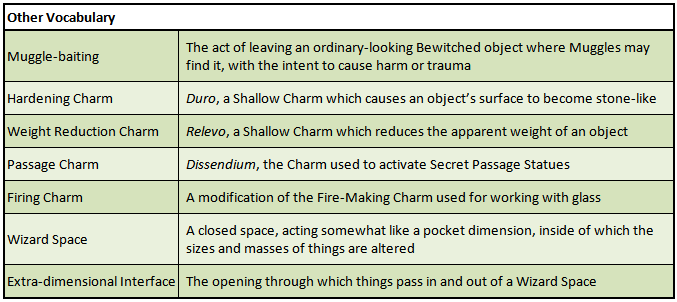Announcements
Welcome to Charms 201!
Please read the following FAQs before joining the class:
When will my assignment be graded?
Charms receives a high volume of assignments submitted each day, and our team is composed entirely of volunteers with real-world obligations. We will not prioritize your assignment over anyone elses. I ask that you be understanding and patient.
If you look in your gradebook, you will be able to see where your assignment is in the grading queue. If you notice that your assignment has not moved at all in the queue after a week, then you may message Professor Laurel or the Head Student, Britini, to look into the issue.
What do I do if I have a question about an assignment?
Please feel free to reach out to any of our PAs with your questions! Just remember: 1. PAs will never give you the answer to a question. They are here to assist you in completing your work; not to do your work for you. 2. If you have any questions or need help, it is always best to ask before you submit your assignment! Keep in mind: Blank answers are an automatic zero; it is better to always try your best!
If you have a question about an assignment that has already been submitted, please send a private owl directly to either the Head Student, Britini, or to Professor Laurel along with your Grade ID for the assignment (this can be found in your gradebook).
If you have any other questions or comments, please do not hesitate to reach out to Professor Laurel or the Head Student, Britini!
Lesson 5) Raw Materials and Midterm Review
Our previous lessons have focused quite a lot on terminology, definitions, and fundamental concepts involved in bewitching an item. In this lesson we’ll discuss, in slightly more detail, the last of the basics: the materials used and factors such as time and cost.
Don’t be overwhelmed by the detail and vocabulary in the first five lessons; I know it’s a lot to remember, so the second half of this lesson will be spent on review. The remainder of the course will be more conceptual. We will get into the theory and practical application of Forms, how to link and weave spells together, and finish with practice casting multiple spells on a single target.
Last week, we looked at some examples of Effect Forms. Since giving you lists and lists of Forms and charm names is useless, we put them in the context of a few common Implementations to help you understand the kinds of Effect Forms that exist, examples of charms one might find within them, and how they are combined to create a bewitched object. Specifically, we looked at Broomsticks, Secret Passage Statues, Orreries, and Cauldrons. The Forms we discussed are provided in the Midterm Review at the end of this lesson.
We also discussed the differences between Deep Object Charming and Shallow Object Charming in slightly more detail.
Raw Materials and Cost
We touched on materials briefly in Lesson Two, and in a few of the examples in Lesson Four, particularly in discussing broomsticks, but why do they matter? You can use Shallow Object Charming on pretty much anything that hasn’t been warded against it; Power Forms provide magical energy for Deep Object Charming, so what’s the big deal?
We can say that in Deep Object Charming, the magical energy of the spells is absorbed into the object. However, not all materials have the same affinity for magical energy. Sometimes it just doesn’t “stick” as well and can affect the quality of the finished Implementation. This can have an effect on Shallow Object Charms too, but the differences are negligible and their study is beyond the scope of this class. There are four unofficial “levels” of material used in bewitchment, although it’s really more of a gradual spectrum, arranged here in order of increasing quality (and cost).
Synthetic
Synthetic materials would never have been used in the past. However, as intermingling with Muggles increases, driven mainly by the increasing number of mixed-blood households, the Wizarding World has taken notice of certain cost-effective Muggle manufacturing tricks, namely plastics. These are particularly incompatible with magic, but can be cost-effective for exceedingly simple, single-use pranks, and can make perfectly adequate housing or structural support for discrete magical parts. For example, the moving parts of a bewitched cuckoo clock might be painted wood, but the small house in which the pieces hide when inactive could be made of Muggle-derived materials. Plastics are increasingly common in packaging as well. Items made with synthetic materials typically have significantly shorter shelf-lives; their magic often begins to fade after three to six months.

Mundane
Mundane materials are those of natural origin, but with no affinity for magic. Some woods fall into this category, along with grasses or other plant fibers used in fabrics and parchment, and some stones and metals, like iron. Sand can also fall into this category; it may be used in hourglasses for various applications, in some toys or decorative objects, or it can be used as a raw material in making glass. Plywood typically falls into this category; although it can be made from very magical woods like pine, the individual trees used are often bred for this purpose, and have become slightly less magical than, say, a pine growing in an isolated forest atop the Himalayas. Add to that the damaging manufacturing process used by Muggles and you get a material that is receptive to magic, certainly, but not likely to display any fantastical properties of its own. Magic is a part of the natural world, and though these items lack intrinsic power, the energies can take hold and sink in. The bond may be stronger for things that were once alive; invisible inks made from plant-based pigments rather than synthetic chemical pigments tend to last longer and are more difficult to reveal. Charms placed on mundane materials can last for quite a long time, depending on the intent and finesse of the caster.
Transitional
This term is more commonly heard in the field of potions, but is creeping its way into bewitchment more and more. It refers to items which do not seem to have any detectable intrinsic power of their own, the way that gillyweed or House Elves do. However, when exposed to magic in one form or another, they seem to develop emergent magical properties. Consider owls: they have not been seen to display explicit uses of magic, they do not apparate, and despite extensive study, Muggles haven’t found any characteristic of owls which is out of the ordinary. In the Wizarding World, however, an owl can find anyone, anywhere, at any time, with extraordinary accuracy and little prior knowledge. Because they have only exhibited this behavior in the presence of wizards, where Muggles would rely instead on pigeons or technology, we can reasonably assume that the talents of the owl have something to do with magic. Certainly, there are wizarding breeders who select for higher magical affinity or talent in their owls, but some wizards, particularly in more remote areas, prefer to maintain the practice of their ancestors, befriending and training wild owls which serve the same purpose.

Other mundane birds, typically those considered more intelligent, such as falcons and eagles, may also be considered to have an affinity for magic; for this reason, their feathers are favored materials for many types of bewitched quills. Many plant species, such as mistletoe, and several types of wood also fall into this category. The actual degree of magical affinity varies.
Magical
Then, of course, there are strongly magical resources. Magical creatures like the dragon, Demiguise, unicorn, etcetera fall into this category. Less obvious are strongly magical plants. All wand woods - at least, all those used by Ollivander in London - come from magical trees, frequently indicated by the presence of Bowtruckles. Demiguise hair fabrics, phoenix feather quills, and Dragonhide clothing are also sought-after Implementations. As previously stated, these distinctions are really more of a sliding spectrum. A rowan tree bursting with Bowtruckles may have a slightly higher natural affinity for magic than a date palm, where Bowtruckles may not be found at all; one might place palm wood somewhere between “magical” and “transitional.” Objects containing magical materials, constructed by an expert, can remain powerful for extremely long periods. Many cursed objects, such as those handled by the Maheka-Lala in Egypt, have unleashed extraordinary devastation even after thousands of years.
Natural vs Artificial Magic
Even though we cannot use some of the materials previously described to make magical objects, Muggles are very innovative and have been able to find uses for these materials. Wizards may even find uses for objects made by Muggles sometimes! For more complex tasks, however, it is possible to imbue a material with more magic. An Invisibility Cloak made with Demiguise hair relies on natural magic inherent in the Demiguise. For efficient manufacturing of cheaper, charm-based varieties, yards and yards of mundane fabric may be made artificially magical by soaking them in potions before they are cut, making them more receptive to additional Forms later in the manufacturing process.
Artificially magical materials are not only used to cut cost, they may be important in generating more specialized components. Dragon Glass, for example, is a required component in certain high-quality orbs, special phials, or mirrors, like a Foe-Glass. Like mundane glass, it is made by melting sand (mixed with a couple of other chemicals). As you’ve probably guessed, however, it is heated not by an oven, but by a dragon’s flame. Dragons are capable of producing fire at extraordinary temperatures. The magical energy in their flame also allows the ingredients to melt together much faster than by Muggle means and to form a particularly smooth, homogeneous glass. This glass is also somewhat more durable than mundane, although it will still shatter if you drop it from a height or throw something at it. It is generally much easier to work with, and produces a much finer bewitched product.
This method of production is expensive due to the difficulties associated with keeping and training dragons, but is much cleaner and faster than Muggle techniques. Other magic-based techniques are not favored; the amount of energy required to melt sand into glass is too much for a single wizard to accomplish with fire-related spells, and even if a team of wizards could concentrate while standing near that much heat, the end result would be irregular and inconsistent, looking rather like a warped antique window.

Dragon Glass manufacturers typically produce the glass in sheets or solid orbs which they sell to bewitchers as raw materials. Once formed, the glass can be softened into a workable consistency by using a specialized variant of the Fire-Making Charm. For larger, more complex items, it is sometimes best to have two or more artisans working at the same time: one or two to maintain the Firing Charm, and one or two to work the glass into the necessary shape and apply any other required Forms. Wizards hailing from Murano, an island in Venice, Italy famous for its glass, have raised the process into an art form, choreographing spectacular shows around the production of their glass sculptures for the entertainment of wizarding tourists.
Availability and Sourcing
It isn’t enough to simply choose a more magical material to increase the quality of an item; one must consider the intended use as well. Just as some wand woods are inclined toward defensive spells or toward healing magic, so too do many other natural resources have their own inherent talents. For example, while dragonhide has many exceptional properties, it would be a poor choice for an invisibility cloak.
Naturally, magical materials are less common and thus more expensive than mundane materials. Humans have spread into every corner of the globe -- even as witches and wizards, we encroach on the habitats of rare, delicate, or dangerous magical species -- and with the advent of Muggle satellites, drones, and air travel, it has become incredibly difficult to hide and preserve magical flora and fauna. What precious few regions remain uninhabited are patrolled by rangers, poachers, and tourists, or are populated by indigenous tribes with varying degrees of magic who must also be protected. Even where dedicated wizards can preserve magical habitats, large-scale harvesting operations are often impractical, driving up the prices of particularly uncommon or sensitive magical species in recent years.
This hasn’t slowed down the Black Market, however. It thrives on illegal operations such as mining granite with high magical affinity from protected mountain ranges throughout Eurasia, harvesting ancient pines which provide habitat for protected leopards and lynx, and illegally breeding, trapping, and/or stealing baby dragons which they keep in cramped cages, using fear to elicit fire for glass-making. Even though glass made in this fashion, from dragons who are too young and kept under stressful conditions, is of much poorer quality, the Dragon Glass label can triple its selling price. When buying bewitched items, please make sure the components are ethically sourced!
Time
The last factor affecting the cost of an Implementation is time. This is fairly self-explanatory. Something small and simple, like a Gobstone, can be produced in ten minutes. More complex objects require lists upon lists of charms, applied in layer after layer and requiring a great deal of skill and finesse to handle correctly. Vanishing Cabinets, popular during the Wizarding Wars, can take months to complete, and only a handful of expert artisans with the necessary experience remain. As a result, they are very rare and very expensive. Obviously, the longer an item takes to make and the more complex it is, the higher its cost will be.
Midterm Review
The art of creating magical items by applying charms is called bewitchment. There are two types of bewitchment, referring to how any given charm is applied. In Shallow Object Charming, at least one, but sometimes a few, simple charms are placed loosely on an existing object. They do not last more than a day. In Deep Object Charming, many spells are woven together and absorbed into an item, usually during its construction, using defined Forms. Shelf life for Deep Charmed objects can be anywhere from a few months to thousands of years.
Individual charms often cause only minor changes and would be useless on their own in creating a magical object. They are organized into Forms, which help collect individual spells that are more useful together. When we say a Form is applied, we mean that one or more spells in that Form were placed on the target; the specific spells which are chosen help tweak and modify the Form’s effects for a specific application. Each bewitched item that is created has its own Formula, which lists the Forms and charms to be used. The technical term for a completed item is Implementation.

The whole process can be likened to baking a cake, where the recipe represents the Formula. This Formula will consist of things like the Sweetening Form. The Sweetening Form might contain granulated sugar, brown sugar, confectioner’s (powdered) sugar, honey, and various artificial sweeteners. Of course, we don’t need all of those in one cake, so the Formula will say to mix some granulated sugar and a little bit of brown sugar, and use confectioner’s sugar in the frosting that will go on top of the cake. Each of these individual ingredients is like one charm; there will be many charms in a given Form which all lean toward a common purpose (to sweeten things), but we pick and choose which particular charms to apply according to the Formula. A skilled baker will combine everything in the right way, ensuring the cake batter isn’t over-mixed, that the cake rises as it should, that it doesn’t burn, and that the confectioner’s sugar “charm” and other parts of the frosting go on last. The finished Implementation is a frosted cake!
There are three important Form categories: Power Forms determine the source of magical power for an object, Initiation Forms determine how an object is activated or used, and Effect Forms determine how the magical power is used and what effect it has. One Power Form, one Initiation Form, and at least one Effect Form are required for a functional Implementation in addition to the materials we have previously discussed.
Synthetic materials are not very useful for most bewitched items. Mundane materials work well enough for most simple applications. Transitional materials with higher magical affinity and fully magical materials will produce higher quality Implementations, but are less common and more expensive. Magical materials can occur naturally, like wand woods, or be imbued with magic artificially, like Dragon Glass. The more magical the materials in an object, the longer the Implementation will last and the stronger it will be. More complex items take longer to make, and this can also affect their cost.
These tables contains all of the Forms we have studied so far, but this is not an exhaustive list of all of the items we have described or all of the Forms used in those items. You will not be responsible for knowing which charms go into which Forms except for those listed in this table. With an adequate understanding of the concepts, you should be able to suggest a couple of reasonable Forms for a given charm and vice-versa, but you will not be tested on any Forms or charms which were not explicitly mentioned in a lesson.



Homework
As per usual, you will have a short worksheet covering only the Lesson Five material (raw materials and time). Your midterm essay will take the place of a journal entry for this week; I have once again made it optional, though I recommend it for students who wish to test their understanding of the material. Hopefully you found this review helpful and appropriately kitten filled. If you have any questions please don’t hesitate to ask and good luck!
Image credit: Bored Panda, Alibaba, Manu’s Menu
- CHRM-101
Enroll
-
Year Two Midterm
Essay -
Lesson Five Worksheet
Quiz
-
Britini
Head Student
-
Jean V. Ollivander
Professor's Assistant
-
Evony Senoj
Professor's Assistant
-
Will Bryce
Professor's Assistant
-
Tulip Karasu
Professor's Assistant


